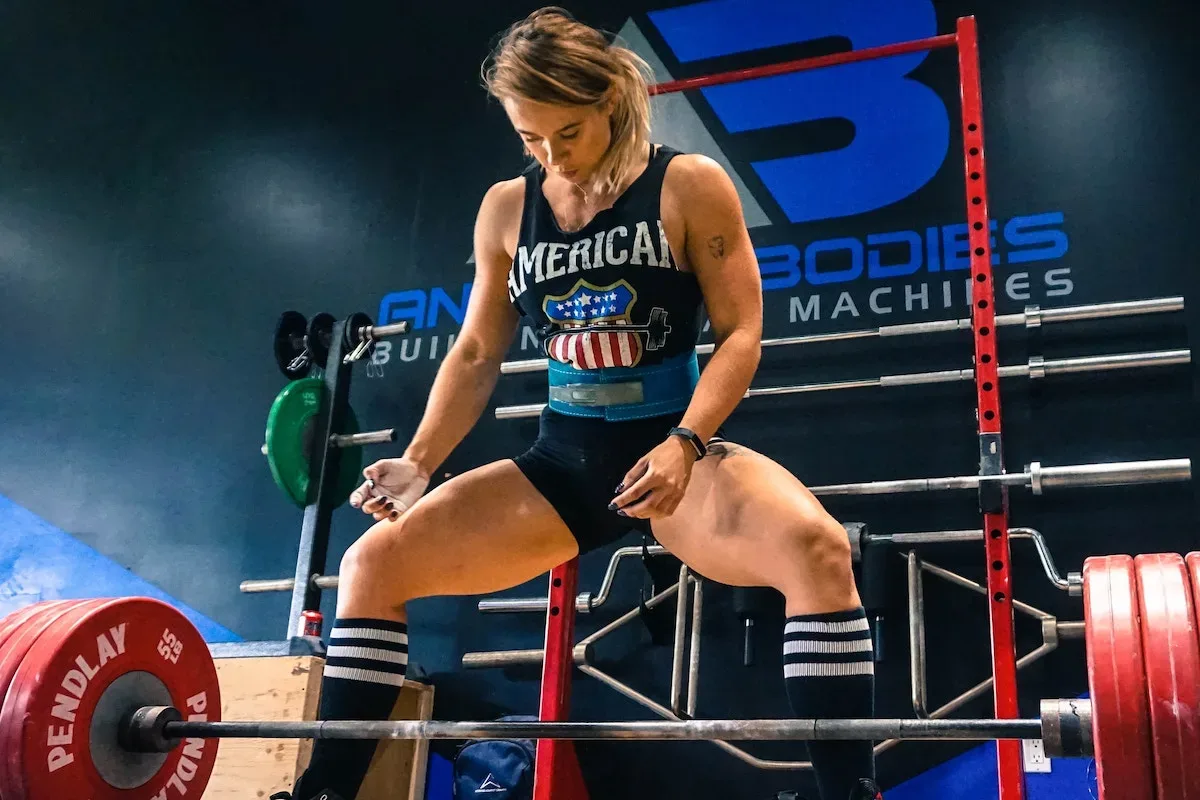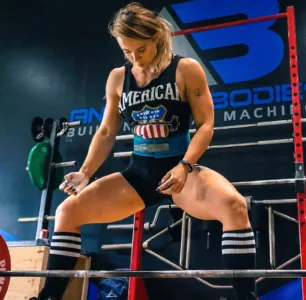Rugby is a sport that demands strength, power, and endurance from its players. As one of the most physically demanding sports in the world, rugby requires players to be in peak physical condition. While traditional rugby training involves drills, sprints, and scrimmages, many players are turning to weightlifting to enhance their performance on the field. One of the most effective weightlifting exercises for rugby players is the deadlift.
Deadlifts are a compound exercise that work the entire posterior chain, including the hamstrings, glutes, lower back, and traps. They also engage the core, making them a great exercise for improving overall strength and stability. Deadlifts are particularly beneficial for rugby players, who require a strong lower body to tackle opponents, push scrums, and maintain balance during rucks and mauls.
In addition to building strength, deadlifts can also help rugby players improve their agility and reduce the risk of injury. By strengthening the muscles in the legs and hips, deadlifts can improve a player’s ability to change direction quickly and explosively. They can also help prevent common rugby injuries, such as hamstring strains and lower back pain, by improving muscle imbalances and promoting proper form.
To incorporate deadlifts into your rugby training regimen, it’s important to start with proper form. Begin by standing with your feet shoulder-width apart and the barbell directly in front of you. Bend your knees and hips to lower your body down and grasp the bar with an overhand grip. Keep your back straight and your core engaged as you lift the bar, driving through your heels and extending your hips until you are standing upright. Lower the bar back down to the ground with control and repeat for several reps.
As with any exercise, it’s important to start with a weight that is manageable and gradually increase the weight as you build strength and confidence. Deadlifts can be incorporated into a full-body strength training routine or used as a standalone exercise on rugby training days. It’s recommended to perform deadlifts 1-2 times per week, with 3-4 sets of 6-8 reps per session.
In addition to traditional deadlifts, rugby players can also incorporate variations of the exercise to target specific muscle groups and add variety to their training. Sumo deadlifts, for example, involve a wider stance and place more emphasis on the inner thighs and glutes. Romanian deadlifts focus on the hamstrings and lower back, while trap bar deadlifts are a great option for beginners or those with limited mobility.
When incorporating deadlifts into your rugby training regimen, it’s important to prioritize proper form and safety. Always warm up before lifting and use a weight that is appropriate for your skill level. Consider working with a trainer or coach to ensure that you are using proper form and technique, and listen to your body if you experience any pain or discomfort.
In conclusion, deadlifts are a powerful tool for building strength, improving agility, and reducing the risk of injury in rugby players. By incorporating this compound exercise into your training regimen, you can enhance your performance on the field and become a stronger, more resilient athlete. With proper form, safety precautions, and consistent training, deadlifts can help you take your rugby game to the next level.
What rugby skills are deadlifts helpful for
Deadlifts are helpful for several rugby skills, including:
- Tackling: Rugby players need to be able to tackle opponents with strength and power. Deadlifts can help develop lower body strength, which is essential for generating force in a tackle.
- Scrumming: In a scrum, players need to push against each other with maximum force. Deadlifts can help develop the leg and core strength needed for a strong scrum position.
- Rucking and mauling: In rucks and mauls, players need to maintain their balance while pushing against opponents. Deadlifts can help develop lower body stability, making it easier to stay on your feet and keep pushing.
- Acceleration and speed: Rugby players need to be able to accelerate quickly and maintain speed over short distances. Deadlifts can help develop explosive power in the legs, which is essential for quick starts and changes of direction.
- Jumping: Rugby players often need to jump to catch a ball or contest a lineout. Deadlifts can help develop lower body power, which can improve jumping ability.
Overall, deadlifts can help rugby players develop the strength, power, and stability needed to perform at their best on the field.
Proper Deadlift technique
Proper deadlift technique is essential for getting the most out of the exercise and preventing injury. Here are some key tips for performing deadlifts with good form:
- Start in the right position: Stand with your feet shoulder-width apart, with the barbell on the ground in front of you. The bar should be centered over your feet, with your toes pointing slightly outwards.
- Engage your core: Before lifting the bar, engage your core muscles by taking a deep breath and bracing your abs. This will help stabilize your spine and prevent injury.
- Grip the bar: Grasp the bar with your hands shoulder-width apart, using an overhand grip. Your palms should be facing downwards and your fingers should be wrapped tightly around the bar.
- Lift with your legs: To lift the bar, bend your knees and hinge forward at the hips, keeping your back straight. Push through your heels and drive your hips forward, straightening your legs as you lift the bar off the ground.
- Keep your back straight: As you lift the bar, it’s important to keep your back straight and your chest up. Don’t round your back or hunch over the bar, as this can put excessive strain on your lower back.
- Finish in the right position: Once you’ve lifted the bar, stand up straight with your hips fully extended and your shoulders back. Hold the bar at hip level, then lower it back down to the ground with control.
- Breathe properly: It’s important to breathe properly while performing deadlifts. Take a deep breath before lifting the bar, then exhale as you lift it off the ground. Inhale as you lower the bar back down.
Remember, deadlifts are a complex exercise that require proper form and technique to perform safely and effectively. If you’re new to deadlifting or have any concerns about your technique, it’s always a good idea to work with a trainer or coach who can provide guidance and support.
Deadlift variations and what they do differently
Deadlifts can be performed in several variations, each targeting different muscle groups and providing unique benefits. Here are some of the most common deadlift variations and what they do differently:
The conventional deadlift is the most basic and widely used variation. It involves standing with your feet shoulder-width apart and gripping the barbell with an overhand grip. Conventional deadlifts primarily work the lower back, glutes, and hamstrings, making them a great all-around exercise for building lower body strength.
Sumo deadlifts are similar to conventional deadlifts, but with a wider stance and a closer grip on the bar. This variation places more emphasis on the inner thighs and glutes, making it a good option for athletes who want to target those muscles.
Romanian deadlifts (RDLs) are a variation that focuses more on the hamstrings and lower back. Instead of lifting the bar from the ground, you begin in a standing position and hinge forward at the hips, keeping your legs straight. RDLs can be performed with lighter weights than conventional deadlifts, making them a good option for beginners or athletes with limited mobility.
Trap bar deadlifts are performed using a trap bar, which is a hexagonal bar that you stand inside of. This variation can be easier on the lower back than conventional deadlifts, as it places the weight closer to your center of gravity. Trap bar deadlifts work the entire lower body, with a particular emphasis on the quads.
Deficit deadlifts involve standing on a platform or weight plate to increase the range of motion of the exercise. This variation can be useful for athletes who want to improve their strength and mobility in the bottom position of the deadlift.
Incorporating different deadlift variations into your training can help you target specific muscle groups and prevent plateauing. It’s important to choose the variation that best suits your training goals and skill level, and to always prioritize proper form and technique.
The equipment needed for deadlifts
The equipment needed for deadlifts is relatively simple and straightforward. Here’s a breakdown of what you’ll need to get started:
- Barbell: The barbell is the central piece of equipment for deadlifts. It’s a long, straight metal bar that you load with weight plates. Barbells come in different lengths and weights, so choose one that is appropriate for your body size and strength level.
- Weight Plates: Weight plates are circular metal disks that are loaded onto the ends of the barbell. They come in a range of weights, from 2.5 pounds to 45 pounds or more. It’s important to use weight plates that are appropriate for your strength level and training goals.
- Lifting Belt: A lifting belt is a thick, wide belt that you wear around your waist during deadlifts. It provides extra support to your lower back and core, reducing the risk of injury. Lifting belts come in different sizes and materials, so choose one that fits comfortably and provides adequate support.
- Lifting Straps: Lifting straps are optional but can be useful for athletes who struggle with grip strength. They are made of strong fabric and wrap around the barbell and your hands, providing a more secure grip. Lifting straps can be useful for performing heavier deadlifts, but it’s important to develop grip strength over time to avoid becoming overly reliant on them.
- Chalk: Chalk is a white, powdery substance that you can apply to your hands to improve grip. It’s particularly useful for athletes who sweat heavily or struggle with grip strength. Chalk can be messy, but it can be a game-changer for athletes who need extra grip support.
- Deadlift Platform: A deadlift platform is a padded mat or platform that is designed specifically for deadlifting. It provides a stable, non-slip surface for lifting, and can help absorb some of the impact of the weight as you lower it back down to the ground. While a deadlift platform is not strictly necessary, it can be a useful addition to a home gym or training space.
Overall, the equipment needed for deadlifts is relatively simple and straightforward. As with any exercise, it’s important to prioritize safety and proper technique, and to choose equipment that is appropriate for your training goals and skill level.

